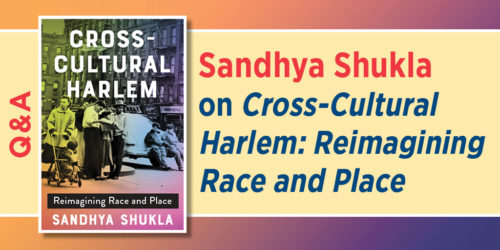Yoga on Fifth Avenue — Excerpt from Theos Bernard, the White Lama
In the chapter “Yoga on Fifth Avenue,” Paul Hackett describes Theos Bernard’s return to New York City and his efforts to bring the teachings of Buddhism and Yoga to the United States. Eventually setting up a school and studio at the Hotel Pierre, Bernard sought to bring the knowledge and wisdom he had gained during his travels in Tibet to an American audience whose views of the country had been shaped by Lost Horizon and other fictional or mythical treatments.
For more on Theos Bernard, the White Lama: Tibet, Yoga, and American Religious Life, you can read the preface (part 1, part 2):
Before his first book had been published, Theos had begun to receive a substantial amount of fan mail from across both America and Europe, and it only increased once Penthouse of the Gods hit bookstore shelves. As ostentatious as the claims he made in his book and articles were, they often could not begin to compare with the mythic images of Tibet already in circulation. In his interviews, lectures, and books, Theos actively courted the “Lost Horizon” crowd of Tibetophiles and otherwise hopeful spiritual seekers. He drew on—and had to contend with—many people who had taken their inspiration from other sources: the readers of Baird T. Spaulding, Talbot Mundy, Edwin J. Dingle, Theodore Illion, and others.
A self-proclaimed expert on Tibet, Baird T. Spaulding—who, more accurately speaking, was to Indo-Tibetan studies what Geoffrey T. Spaulding was to African ethnology—had wowed the most gullible segment of “Eastern mysticism” neophytes with his series of books, The Life and Teaching of the Masters of the Far East—until it was discovered that he had spent most of his life as a gold prospector in Wyoming and a minor script writer for Cecil B. DeMille. Nonetheless, fans of Spaulding’s Teaching of the Masters found inspiration from newspaper accounts of Theos’s experiences in Tibet. One fan wrote to him, asking:
“I’ve read Baird T. Spaulding’s books, “Life and Teachings of the Masters of the Far East.” While you were in Tibet, were you privileged to see Jesus in person; to see food appear on the table, and to see people who were several hundred years of age?
I like the teaching of these people as told by Mr. Spaulding, but would like to know more.”
Careful not to alienate his consumer base, Theos had a standard form letter crafted for quick replies, thanking his fans for their interest in himself and informing them that “the answers to your questions can be found in my recent book, Penthouse of the Gods.”
By the fall of 1939, with a lucrative business tutoring students—individually and in small classes—Theos was ready to break out on his own. Interviewed once again by his now friendly contact, Stewart Robinson at Family Circle magazine, Theos declared: “The general public is 99% wrong about what Yoga is. It is not a religion, although it is most distinctly a way of life. No one need sacrifice an iota of his religion to engage in Yoga.”
Moving out of DeVries’s studio, Theos expanded into the suite of apartments he had rented at the Hotel Pierre, on the Upper East Side, where he attempted to follow the model DeVries had used—a lecture followed by in-class demonstrations—offering daily yoga classes and Wednesday night seminars. Sending out flyers announcing “The American Institute of Yoga,” Theos hired one of DeVries’s old students, Claire Lea Stuart, to be a yoga instructor while he lectured, and his father manned the front desk.
In the present day and age, Theos informed his students, the only way to achieve happiness and spiritual realization was through the physical activity of yoga.
We are constantly afraid of life. The mechanisms of a city drive us away from life. We can gain in this age thru action what Buddha did thru meditation, with what Christ did thru prayer . . . we must do it thru action. . . .
In Tibet, vows of silence are common. A few hours of silence every day enables the mind to turn in on itself, and our spiritual development can begin. As it is, we hold ourselves back. When we lie to others, we lie to ourselves; when we slander others, we are slandering ourselves. This is because we generally see in others the traits we ourselves have. Each of our friends sees us differently, for each sees himself in us. To help ourselves, we must speak the truth, praise our friends, and speak sensibly. If everyone observed this, they would all be in contact with the universal stream of consciousness and the world would be a peaceful and happy one. As we lift our own consciousness, we will have a corresponding effect on our friends. No one knew where Jesus went during his 18 years’ absence; he was alone and in contact with universal consciousness, and he surely was the most unselfish man the world has ever known.
To be like the Buddha or Jesus, he told them, was completely feasible; all they had to do was learn yoga.



